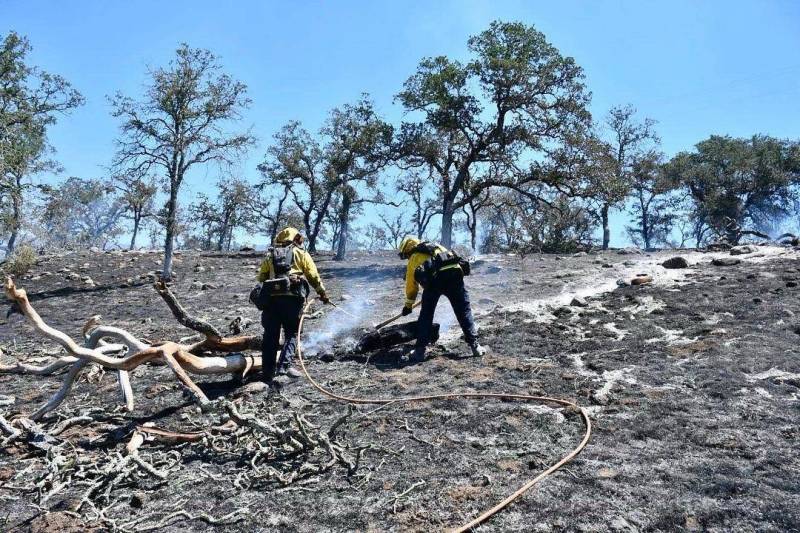In April, PG&E — no stranger to being a target of wildfire investigations — agreed to pay over $55 million and submit to five years of oversight to avoid criminal prosecution for a series of massive wildfires sparked by its power lines in recent years.
With much of California bracing for another potentially active fire season, KQED’s Annelise Finney recently checked in with Erick Hernandez, a public information officer with Cal Fire’s Sonoma-Lake-Napa Unit. The unit, which battled last week’s early season fire, is responsible for monitoring a huge six-county region (which also includes Colusa, Solano and Yolo counties) that has been hit by a spate of devastating blazes in recent years — including the 2020 Glass Fire and the 2017 Tubbs Fire. Now, says Hernandez, crews are actively gearing up for the months ahead.
This interview has been edited for brevity and clarity.
ANNELISE FINNEY: I heard favorable conditions helped your crews quickly contain the Old Fire. Can you describe what that looked like?
ERICK HERNANDEZ: The favorable weather was due to the stable wind conditions. The winds didn’t pick up, which allowed us to be able to continue our operations with mop-up [extinguishing or removing burning material along the control line] and also put out hot spots. Obviously, being out in the rain and very steep terrain, and having high temperatures, makes it challenging. However, the temperatures weren’t as high as expected that week. So, yeah, that made it a lot easier for our crews to continue with the operation.
How did the rainfall on Saturday affect the cleanup work that’s happening?
It helps us out with putting out hot spots. Having more water on the burn scar definitely solidifies the containment. So it definitely assisted. Which is not to take anything away from our crews that worked tirelessly since Tuesday when the fire broke out.
I know last year we saw more wildfires in this region at this point in the year. So how are we doing so far this year?
Last year, in our unit, we didn’t have major fires. We did have small fires that we were able to contain within a day or two. I know that in the state of California as a whole, we did have large fires, such as the Dixie and the Caldor fires, that exceeded 100,000 acres each. But last year is what we would consider, at least in our unit, a slow fire season and it allowed our crews to be able to prepare for this year.
I know that since we didn’t have a lot of rain, we were expecting an early start to the fire season this year. And that’s exactly what we’re seeing.
2020 obviously was a huge year, with fires all over the state of California. Last year was just basically two to three major fires in the state. And this year, we’re already seeing a huge increase. We had the Quail Fire just over in Winters a couple of weeks ago. Then two weeks ago, we had a fire in St. Helena in the burn scar of the Glass Fire. And then we had this fire, which was nearly 600 acres. So we are seeing an increase of fires already, at least in our unit.
How is your unit thinking about this coming season?
With the lack of rain, it’s anticipated that it’s going to be a busy fire season. So there’s daily training at the fire stations and we’re working and engaging with local community members. An emergency preparedness group was initiated last year, with different departments in Napa County like fire, sheriff, public works and public health.
Are you fully staffed now?
Absolutely. We just concluded our third rehire academy last week. So it has allowed us to staff up more engines so we’re able to be ready and deploy resources whenever they’re needed.
How many firefighters graduate out of every rehire academy?
